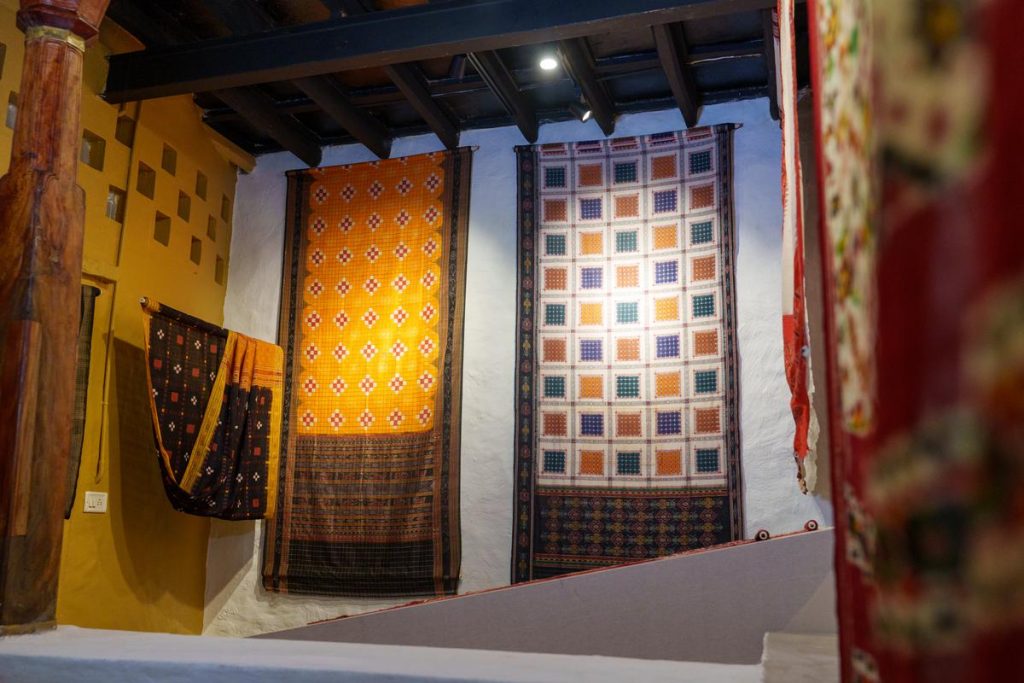The JSW Foundation, the social development wing of JSW Group, recently organised a remarkable exhibition called “Woven Narratives” at Hampi in the Vijayanagar district. Curated by renowned textile designer, writer, and curator Mayank Mansingh Kaul, the exhibition highlights the rich tapestry of Indian handlooms. Held in honour of the G20 Sherpa Delegation, G20 Culture Working Group, and the Ministry of Culture, Government of India, the exhibition aims to showcase the diverse fabrics, patterns, and designs of India to the delegates.
Inauguration and Objectives
The inauguration of the exhibition took place at Hampi Art Labs, with the presence of India’s G20 Sherpa, Amitabh Kant, and the chairperson of JSW Foundation, Sangeeta Jindal. Sangeeta Jindal expressed that the primary objective of the exhibition is to offer a glimpse into the extraordinary range of fabrics and fashions, patterns, and designs that India possesses. The aim is to present the cultural heritage of the country and its handloom sector to the G20 delegates.
Promoting Indian Cultural and Creative Industries
Amitabh Kant, the G20 Sherpa of India, acknowledged the significant impact that Indian cultural and creative industries have on the global creative economy. As a representative of India in the G20, Kant expressed a commitment to promoting these industries, recognizing their economic value on both national and global scales. The exhibition serves as a platform to highlight the prowess and potential of India’s handloom sector, which holds a prominent position after agriculture in the country’s creative economy.
Showcasing India’s Handloom Heritage
Curated by the culture working group team of the Ministry of Culture and the JSW Foundation, the exhibition presents a diverse range of materials, processes, and designs from different regions of India. It celebrates the rich textile tradition of the country while also exploring the influences and stories that have shaped it on a global scale. Visitors have the opportunity to witness both archival textiles and contemporary renditions, creating a dynamic display that bridges the gap between tradition and modernity.
The Intersection of Art and Handloom
In addition to the stunning handloom exhibits, the “Woven Narratives” exhibition also features the works of prominent modern and contemporary artists such as Monika Correa, Astha Butail, and Bappaditya Biswas. This inclusion further emphasises the intersection of art and handloom, showcasing how traditional craftsmanship continues to inspire and influence contemporary artistic expressions.
Preserving and Promoting Handloom Heritage
By highlighting the significance and beauty of Indian handlooms, the exhibition serves as a reminder of the need to preserve and promote this heritage. The handloom sector not only preserves ancient weaving techniques but also sustains the livelihoods of numerous artisans across the country. Through initiatives like “Woven Narratives,” awareness is raised about the value of handlooms, encouraging their continued patronage and support.
Conclusion
The “Woven Narratives” exhibition in Hampi stands as a testament to the vibrancy and richness of India’s handloom heritage. It brings together diverse fabrics, patterns, and designs from different regions, presenting a holistic picture of the country’s textile tradition. By showcasing these treasures to the G20 delegates, the exhibition aims to promote India’s cultural and creative industries on a global platform. As we celebrate India’s handloom legacy, it is crucial to recognise and support the artisans who continue to weave tales of beauty and craftsmanship through their intricate creations.
Feature Image: Red Lilies, Water Birds, The Saree In Nine Stories, The ikat story in Anegundi, Hampi. Courtesy:Hindu
Threaded Works of Art: The Case of Lambani Embroidery from Karnataka

Contributor





